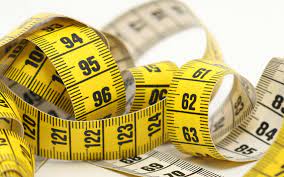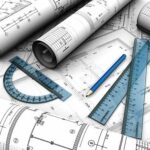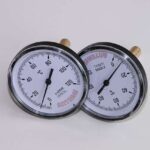1) Method of direct measurement: The value of the quantity to be measured is obtained directly without the necessity of carrying out supplementary calculations based on a functional dependence of the quantity to be measured in relation to the quantities actually measured. Example: Weight of a substance is measured directly using a physical balance.
2) Method of indirect measurement: The value of the quantity is obtained from measurements carried out by direct method of measurement of other quantities, connected with the quantity to be measured by a known relationship. Example: Weight of a substance is measured by measuring the length, breadth & height of the substance directly and then by using the relation
Weight = Length x Breadth x Height x Density
3) Method of measurement without contact: The sensor is not placed in contact with the object whose characteristics are being measured.
4) Method of combination measurement closed series: The results of direct or indirect measurement or different combinations of those values are made use of & the corresponding system of equations is solved.
5) Method of fundamental measurement: Based on the measurements of base quantities entering into the definition of the quantity.
6) Method of measurement by comparison: Based on the comparison of the value of a quantity to be measured with a known value of the same quantity (direct comparison), or a known value of another quantity which is a function of the quantity to be measured (indirect comparison).
7) Method of measurement by substitution: The value of a quantity to be measured is replaced by a known value of the same quantity, so selected that the effects produced in the indicating device by these two values are the same (a type of direct comparison).
8) Method of measurement by transposition : The value of the quantity to be measured is in the beginning, balanced by a first known value A of the same quantity, then the value of the quantity to be measured is put in place of this known value and is again balanced by another known value B. If the position of the element indicating equilibrium is the same in both the cases, the value of the quantity measured is equal to A & B.
9) Method of differential measurement: Based on the comparison of the quantity to be measured with a quantity of the same kind, with a value known to be slightly difference from that of the quantity to be measured, and the measurement of the difference between the values of these two quantities.
10) Method of measurement by complement: The value of the quantity to be measured is complemented by a known value of the same quantity, selected in such a way that the sum of these two values is equal to a certain value of comparison fixed in advance.
11) Method of measurement by interpolation : It consists of determining value of the quantity measured on the basis of the law of correspondence & known values of the same quantity, the value to be determined lying between two known values.
12) Method of measurement by extrapolation : It consists of determining the value of the quantity measured on the basis of the law of correspondence & known values of the same quantity, the value to be determined lying outside the known values.


